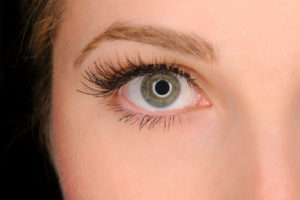 There’s no denying that a woman with full, voluminous lips is sexy. If you have naturally thin lips or have lips that you simply would like to enhance, then you may want to consider contacting Gary J. Price in order to learn more about dermal fillers. As two of the most popular fillers on the market, both Restylane and Juvederm are two dermal fillers that are popular amongst most patients. Read on to learn more about how you can choose the right lips for you.
There’s no denying that a woman with full, voluminous lips is sexy. If you have naturally thin lips or have lips that you simply would like to enhance, then you may want to consider contacting Gary J. Price in order to learn more about dermal fillers. As two of the most popular fillers on the market, both Restylane and Juvederm are two dermal fillers that are popular amongst most patients. Read on to learn more about how you can choose the right lips for you.
Similarities
The first thing to know about both Juvederm and Restylane is that they are both made up of the same ingredient: hyaluronic acid. As an ingredient that is naturally found in our bodies, hyaluronic acid works to plump up skin and lips. However, although Juvederm and Restylane are composed of the same ingredient, they act a bit differently and contain different doses of it.
Juvederm
If you are simply looking to fill in fine lines and wrinkles above and around your lips, then Juvederm will be a great choice for you. Not only is Juvederm a bit more pliable but Juvederm also contains a higher dose of hyaluronic acid, which means that it will laser longer. Additionally, Juvederm can not only fill in those pesky fine lines and wrinkles, but it can also be used to add a bit more of a plump look to your lips as well.
Restylane
If you are looking to add more volume to your lips in a big and noticeable way, Restylane is the better choice. By being cohesive after being injected, Restylane stays in place which makes it easier for Dr. Gary J. Price to work with.
Choosing between Juvederm and Restylane may seem like an impossible decision for you to make. However, during your consultation with Dr. Gary J. Price, he will go over your options and help you make the best choice. To learn more or to schedule your consultation, contact our office today!


 If you are a woman or man of a certain age, you may be noticing things about your neck that don’t exactly thrill you. A saggy, “turkey neck” is nothing to laugh about, and although you are not alone in having to deal with this very common condition, you may want to consider a lower Rhytidectomy.
If you are a woman or man of a certain age, you may be noticing things about your neck that don’t exactly thrill you. A saggy, “turkey neck” is nothing to laugh about, and although you are not alone in having to deal with this very common condition, you may want to consider a lower Rhytidectomy. It’s always been hard to be an adolescent. But in today’s world, it is especially difficult. Social media and peer pressure are much help. Bullying is abundant; feelings of inadequacy can be real. Some teens may think that a cosmetic or plastic surgical procedure will make them happy, help them fit in or give them the self-confidence they need to face their world.
It’s always been hard to be an adolescent. But in today’s world, it is especially difficult. Social media and peer pressure are much help. Bullying is abundant; feelings of inadequacy can be real. Some teens may think that a cosmetic or plastic surgical procedure will make them happy, help them fit in or give them the self-confidence they need to face their world. “Deviated Nasal Septum”…it may be a new concept you haven’t heard much about or you may be a part of the roughly 80% of the population who has one. But what is it?
“Deviated Nasal Septum”…it may be a new concept you haven’t heard much about or you may be a part of the roughly 80% of the population who has one. But what is it? If you are thinking about plastic surgery on your breasts, face or body but are a bit afraid of the procedure and the outcome, you’re not alone. It is surgery, after all, and comes with anesthesia, stitches and yes, some pain. Improving your self-image and achieving a healthier, younger look are worthy goals. And when done correctly, plastic surgery can achieve those goals. Don’t be afraid.
If you are thinking about plastic surgery on your breasts, face or body but are a bit afraid of the procedure and the outcome, you’re not alone. It is surgery, after all, and comes with anesthesia, stitches and yes, some pain. Improving your self-image and achieving a healthier, younger look are worthy goals. And when done correctly, plastic surgery can achieve those goals. Don’t be afraid. One of the reasons the anti-aging industry is a multi-billion dollar business is that nobody likes the idea of aging. The baby-boomers are living longer and are healthier than their parents were. They are committed to living healthy and living long. Men are as interested was women in looking youthful, and a growing number of them are opting for cosmetic surgery, visiting hair salons, and requesting injectable treatments. So, Guilford men, would you like a few suggestions to jump-start your skin-care routine? If so, read on.
One of the reasons the anti-aging industry is a multi-billion dollar business is that nobody likes the idea of aging. The baby-boomers are living longer and are healthier than their parents were. They are committed to living healthy and living long. Men are as interested was women in looking youthful, and a growing number of them are opting for cosmetic surgery, visiting hair salons, and requesting injectable treatments. So, Guilford men, would you like a few suggestions to jump-start your skin-care routine? If so, read on. A “double chin” (submittal fullness) affects a large number of men and women who have found themselves in the midst of dealing with the process of aging. It’s a challenging time, that’s for sure. Excess fat in the chin area can be the result of genetics, weight gain, or aging. However it gets there, it is unattractive and self-esteem deflating. If you would love to reduce the appearance of your double chin, you’re not alone. Loving their neck is something many men and women struggle with, but Dr. Price offers a revolutionary, new answer – KYBELLA®, the first and only FDA approved non-surgical treatment for improving the appearance of moderate to severe fat below the chin. Read on to learn more.
A “double chin” (submittal fullness) affects a large number of men and women who have found themselves in the midst of dealing with the process of aging. It’s a challenging time, that’s for sure. Excess fat in the chin area can be the result of genetics, weight gain, or aging. However it gets there, it is unattractive and self-esteem deflating. If you would love to reduce the appearance of your double chin, you’re not alone. Loving their neck is something many men and women struggle with, but Dr. Price offers a revolutionary, new answer – KYBELLA®, the first and only FDA approved non-surgical treatment for improving the appearance of moderate to severe fat below the chin. Read on to learn more. Even though breast augmentation surgery is the number one cosmetic surgical procedure, it’s a serious decision with many things to think about – like what happens after the surgery and what to expect for your recovery.
Even though breast augmentation surgery is the number one cosmetic surgical procedure, it’s a serious decision with many things to think about – like what happens after the surgery and what to expect for your recovery. Times have changed. A lot. Along with time, what you use to beautify your eyes and face has also changed. Remember back “in the day” – or maybe just yesterday – whey you wanted long, lush lashes for a special occasion or photo shoot and you tried those furry fake lashes with their miniature tubes of glue? And, if you were lucky enough to actually get them to stick, later found one of them had plopped onto your cheek? Not good.
Times have changed. A lot. Along with time, what you use to beautify your eyes and face has also changed. Remember back “in the day” – or maybe just yesterday – whey you wanted long, lush lashes for a special occasion or photo shoot and you tried those furry fake lashes with their miniature tubes of glue? And, if you were lucky enough to actually get them to stick, later found one of them had plopped onto your cheek? Not good.

